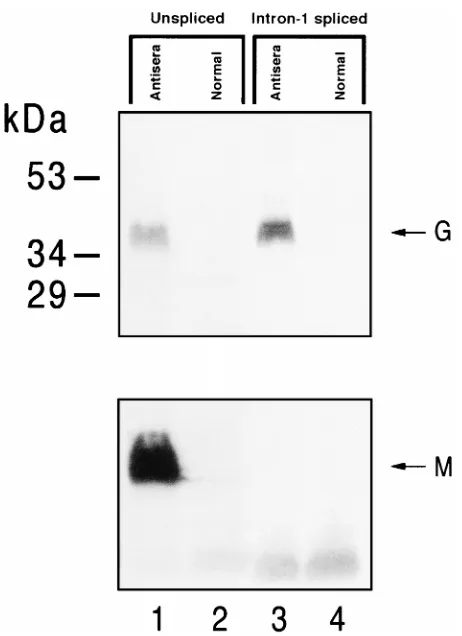Evidence for translation of the Borna disease virus G protein by leaky ribosomal scanning and ribosomal reinitiation.
Full text
Figure




Related documents
Guinea pig antisera and mouse monoclonal antibodies against a 40,000-molec- ular-weight nucleocapsid protein (p40) of herpes simplex virus types 1 and 2 immunoprecipitated 40,000-
In the past, HE (including practical cooking skills) was taught to young people in the last two years of primary education, and although the new curriculum
be demonstrated in spontaneously productive lines by Si nuclease protection; (iii) the presence of Fp-initiated transcripts is not affected by acyclovir blockade of the late
If the coprecipitation of the pKAlB polypeptide in the presence of pK230 is due to interactions between two upstream sites, then the upstream site is localized to amino acid
6(b) indicates the formation of AgCl, which resulted in the measured resistance increasing to tens of kΩ. This suggests that all the silver has been converted to AgCl, with the
In [9], the capability to detect an aircraft by a FS radar using the Global Navigation Satellite System (GNSS) satellites as il- luminator of opportunity was
To address this question, we are study- ing differences in growth properties, oncogene expression, and tumorigenicity between the partially transformed mac- rophages and
Developing Massey’s work on the ‘generative’ power of place (Massey, 2005), we argue that Glasgow’s community gardens create new forms of social relations around working with